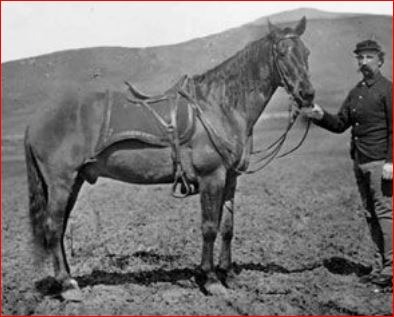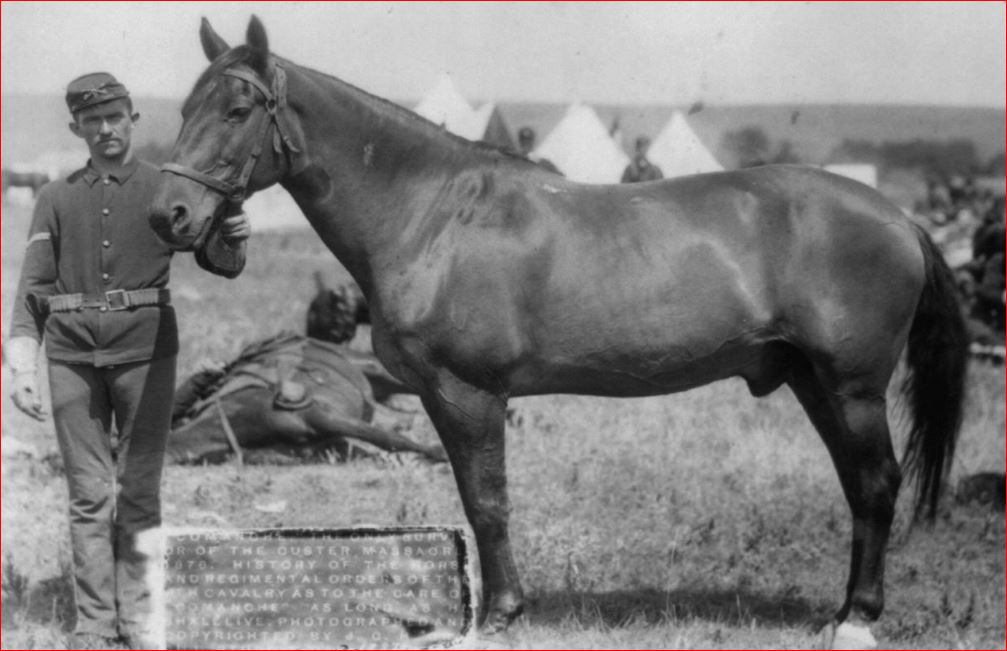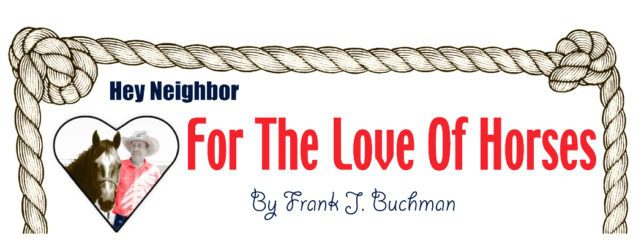War horse hero Comanche’s true-life story will be featured at EquiFest of Kansas workshops.
“With all of attractions at this year’s EquiFest attendees sure don’t want to miss the workshops,” alerted Justine Staten.
“The 25th anniversary EquiFest of Kansas is at the Saline County Expo Center in Salina, March 18-19-20,” said Staten.
Executive director of the Kansas Horse Council, Staten said, “EquiFest is the KHC’s main fundraiser to benefit all horse people.”
Kansas’ premier All-Breed Horse Fair & Exposition offers education, entertainment and shopping for everybody with horse interests.


So many activities have been planned that this year’s EquiFest is actually kicking off a day early, Staten said. “We have breakaway roping clinic on Thursday, March 17, with the official EquiFest starting on Friday,” she added.
Fourteen presentations are scheduled in the workshop rooms at Tony’s Pizza Events Center.
Lieutenant Colonel Robert Kornacki, Armor regiment retired, will discuss Comanche survivor of the Battle of Little Bighorn in Montana Territory.
Comanche survived the United States Seventh Cavalry battle, June 25, 1876, where Lieutenant Colonel George Custer’s entire detachment was killed.
Tom Custer, George Custer’s brother who died at Little Bighorn, picked up the horse at Fort Leavenworth in 1868
Ancestry and birthdate of the horse were both uncertain. Captain Myles Keogh of the Seventh Cavalry liked the 15-hands, bay gelding and bought him for his personal mount. While the Army was fighting the Comanche in Kansas, the horse was wounded in the hindquarters by an arrow.
Still his mount continued to carry Keogh in the fight. He named the horse “Comanche” to honor his bravery, and Keogh rode Comanche at the Battle of Little Bighorn.
U.S. soldiers found Comanche badly wounded two days following the battle. After being transported to Fort Lincoln, he was slowly nursed back to health. Transported to Ft. Abraham Lincoln in the Dakota Territory, Comanche officially retired from service in April 1878.
His keeper, farrier John Rivers said Comanche, 21-years-old, was a veteran, with the Seventh Cavalry since its organization in 1866.
According to Rivers, “Comanche was found by Sergeant Milton DeLacey in a ravine where he had crawled. His wounds were serious, but not necessarily fatal.”
Seven scars were apparent from as many bullet wounds including four on the shoulder, one through a hoof, and one on each hind leg.
In June 1879, Comanche was brought to Fort Meade remaining there until he was moved to Fort Riley in 1887. As an honor, he was made “Second Commanding Officer” of the Seventh Cavalry, occasionally leading parades.
Dying from colic on November 7, 1891, Comanche was believed to be 29-years-old at the time. He is one of only four horses in United States history to be given a military funeral. The others were Black Jack, Sergeant Reckless and Chief, all with their own personal stories.
Remains of Comanche were not buried but instead sent to the University of Kansas in Lawrence. His taxidermy mount can still be seen today in the university’s Natural History Museum. Comanche was restored by museum conservator Terry Brown in 2005.
Comanche is often described as the sole survivor of Custer’s detachment, but this is not entirely accurate. Other horses survived, probably more than a hundred, but in better condition were taken as spoils of battle.
The other horses are gone, which means that in a sense the legend is true. Comanche alone survived.
A number of stories have been written about Comanche also honored in movies and a 1961 song by Johnny Horton.
Kornacki is a self-proclaimed horseman for more than three decades with everyday hands on experience. A longtime foxhunter, Kornacki has participated in numerous leadership roles foxhunting at Fort Leavenworth. He has ridden Fort Riley trails several times with a cavalryman who served at Fort Riley in the 1930s. Kornacki is also the author of multiple horse-related articles.
While there have been many stories about Comanche, his life has always been of special interest to Kornacki. Light will be shown on which was which and what was what in Kornacki’s presentation during the EquiFest of Kansas workshop.
He’ll be assisted in the presentation by Cathie Kornacki, Captain Tess Brunstein, and Captain Erin Fetzer. That threesome will also present a workshop about Iceland Riding Adventures.
Among other workshops are Right Horse Initiative, Happy Horse Behavior, Legendary Kansas Horsemen, Western Dressage, and Back Country Horsemen.
Details can be found on Kansas Horse Council and EquiFest of Kansas websites as well as Facebook.
